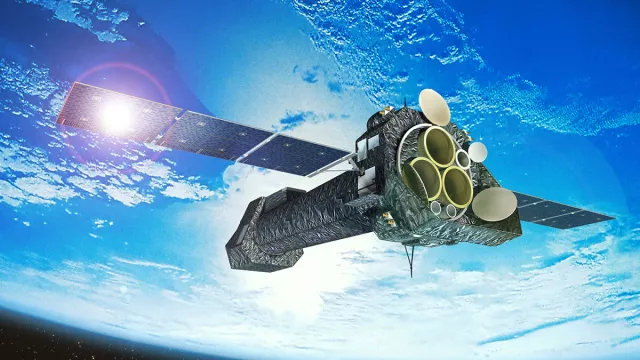Launched in 1999 and tipping the scales at 3,800 kg, XMM-Newton is the largest scientific satellite ever built in Europe, designed to observe X-rays across the universe.
Key information
| Mission | X-ray astronomy |
|---|---|
| Domain | Science |
| Launch date | 10 December 1999 |
| Partners | ESA, NASA, CEA, IAS, IRAP, Observatoire de Strasbourg |
| Where | 40°-inclined elliptical Earth orbit (perigee: 7,000 km, apogee 114,000 km) |
| Lifetime | Initially 2 years, extended several times, most recently to 31 December 2025 |
| Status | In operation |
Key figures
- 3,764 kg: mass of space telescope
- 10 m x 16 m x 4 m: dimensions of space telescope
- 3 instruments
- 4 contributing French laboratories
Key milestones
- 31 December 2025: End of mission
- 10 December 1999: XMM-Newton launched by Ariane 5 G
- March 1997 to September 1999: Construction and testing of telescope
- 1993: XMM-Newton project kicks off
Project in brief
X-rays are emitted by the hottest known sources such as stars, hot interstellar gases, black holes, galaxies and galaxy clusters. The cameras on the XMM-Newton satellite (for X-ray Multi-Mirror) are the most sensitive yet built to detect them and its mirrors are among the most powerful ever developed for X-rays.
XMM-Newton was launched on 10 December 1999 from Kourou by an Ariane 5 vehicle. It’s still operating today, circling Earth in a 48-hour, 40°-inclined elliptical orbit at a distance of 114,000 kilometres at its furthest point and 7,000 kilometres at its closest.
XMM-Newton is the 2nd cornerstone mission of the European Space Agency’s Horizon 2000 programme. Some 2,000 astronomers all over the world use the telescope’s data.
CNES’s role
CNES helped to fund the XMM-Newton mission through its contribution to ESA’s mandatory scientific programme and directly through the national programme for France’s contribution to the EPIC and ERMS instruments, and to the XMM-Newton Survey Science Centre (SSC).
Contacts
Astronomy & Astrophysics subject matter expert
Philippe Laudet
E-mail: philippe.laudet at cnes.fr


